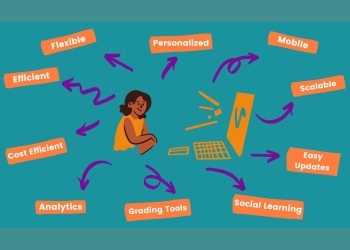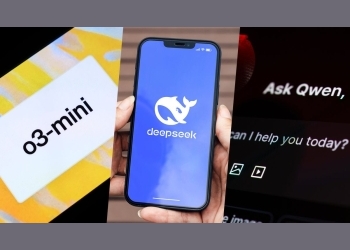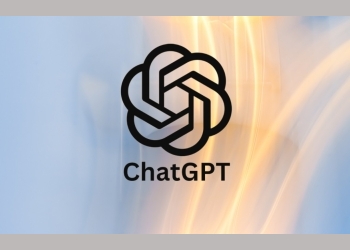
The newest addition to the HTC One lineup is a handsome phone, don’t get me wrong. The gloss fades, however, when you compare it to its iOS-powered doppelgänger. Things get even murkier when you compare it to the M9, the A9’s pricier older sibling. With recent news that the A9 will cost $500 a few days after the special $400 launch price expires, I have to wonder whether the perfectly competent copycat is worth it. My gut feeling is a sickening maybe.
What Is It?
The HTC One A9 is a 5-inch Android phone that looks hilariously similar to an iPhone 6 or 6s. This apparent gimmick seemed a lot more exciting when HTC first announced the phone for just $400, but it seems like a challenge now that we know the A9 will actually sell for $500. That 25-percent markup puts the device in a more competitive posture, especially since the new and much celebrated Nexus 6P retails for the same amount. Nevertheless, the A9 is still a very good looking alternative not only to Apple’s finest but also the flagships from Samsung, LG, and other Android friends.
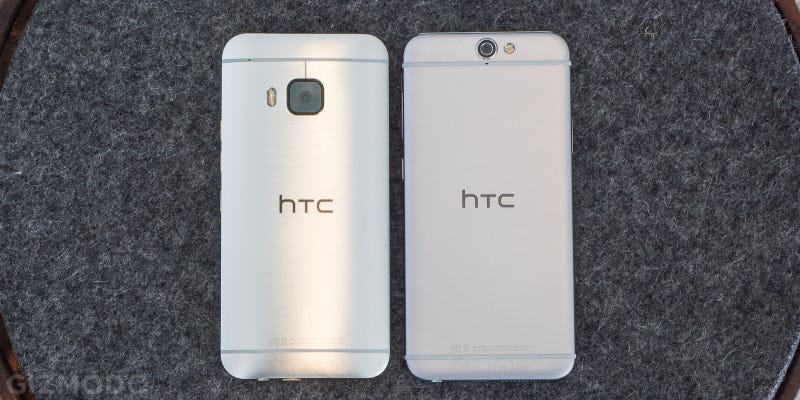
Now is a great time to bring up the obvious question: What about the HTC One M9? The A9 is clearly being marketed as a midrange alternative to the $650 flagship, but it’s worth wondering if it’s good enough to forget about HTC’s flagship altogether.
Why Does It Matter?
Wondering whether Apple makes the best phones is a fun game. Personal preferences aside, there’s a solid argument to be made that the iPhone is the best performing device you can buy. Or, if you don’t buy that, the Cupertino kids at least offer the best designed products on the smartphone playground.
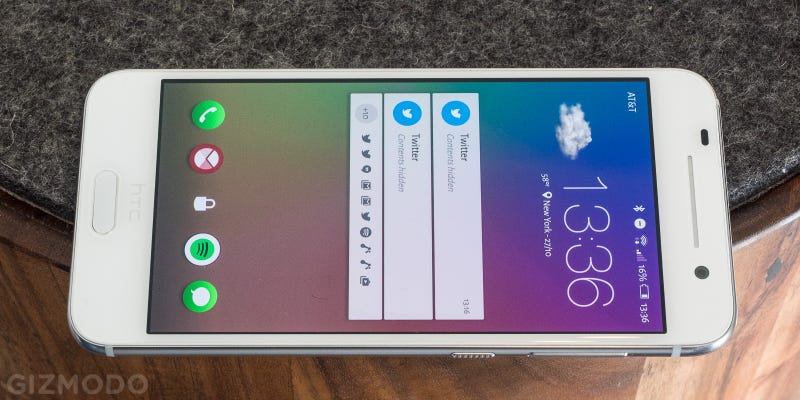
This game becomes confused when you pick up the HTC One A9. If you slipped this aluminum obelisk into the pocket of almost any iPhone user, they wouldn’t know the difference. Even from a slight distance, the A9 looks so much like an iPhone you’d think it was a well-crafted knockoff at worst. What’s interesting is HTC was once known as having some of the best design chops among Android, specifically with 2013’s One M7.

Now, the once champion, amid financial trouble, turns to something different, yet obviously familiar to any smartphone-buying adult. Since the looks are so similar, the real test, then, comes down to whether or not the new Android-powered HTC device can keep up with an iPhone in terms of performance.
Design
It looks like an iPhone. At 5-inches it’s slightly bigger than an iPhone 6, slightly smaller than a 6 Plus. This is the last time I’ll say it so directly. The A9 has the same shape, the same antenna lines, the same basic form factor as the very popular iPhone 6. The edges are squared off a bit more. The volume buttons are on the same side as the lock button. The home button (with built in fingerprint scanner) is oval instead of round. The rear camera is in the center instead of on the side. Otherwise, it’s a slightly bulkier iPhone.
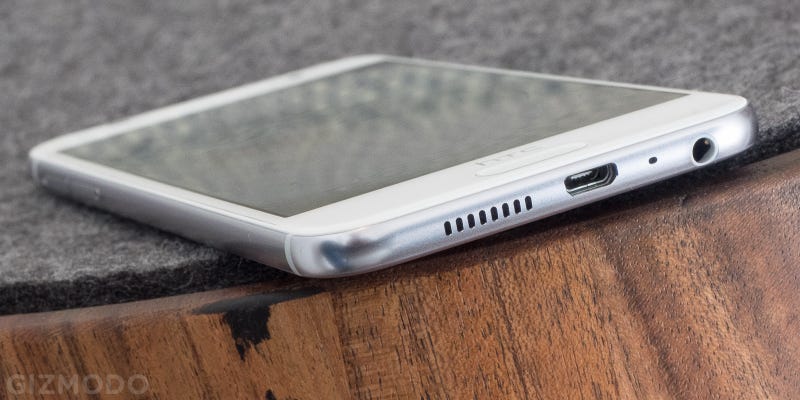
If you want to compare the all-metal A9 and M9, the A9 is undeniably sleeker, slimmer, and more sensible. Gone is the rounded back and odd notch behind the bezel. The A9 is a gentle wafer of glass and aluminum, while the M9 feels almost too rigid and bland.
HTC users might miss the dual speakers on the front of the M9. The A9 favors the same machined dimples you’d find on an iPhone. But unlike the M9, however, there is a handy fingerprint reader.
Using It
If you’re an iPhone 6 user like I am, the first thing you’ll notice about the A9 is that it is not an iPhone 6. Aside from the similarities in hardware design, the A9 is noticeably slower and more prone to lag episodes.
This is a little bit surprising since the A9’s brand new 1.5-GHz Snapdragon 617 octa-core processor should run faster than the iPhone 6’s 1.4-GHz A8 chip. And yes, the abbreviations only get more confusing, when you consider the iPhone 6S and its 1.8 GHz chip. Naming aside, benchmark tests reveal that the A9 underperforms when head-to-head with the older iPhone 6S. You’ll notice it on particularly processor-heavy apps like graphics-heavy games.
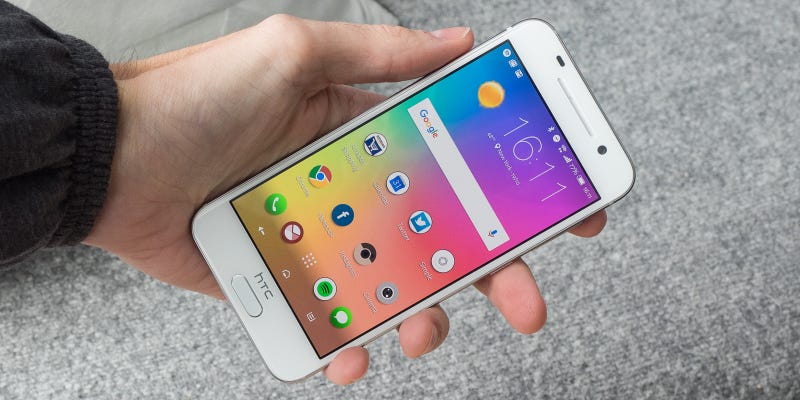
Benchmarks aside, the A9 does showcase some pretty appealing capabilities for an HTC phone. The battery is smaller than the M9 and its own disappointing battery life, and its lackluster performance reflects that fact.
Android 6.0
The HTC One A9 comes with Marshmallow, the latest edition of the Android operating system and the first phone outside of the Nexus lineup to get the update. Other Android phones do too—or at least they will—but the A9 willalso enjoy a uniquely speedy update schedule. HTC says that the operating system will get updated “within 15 days” of updates to Google’s own Nexus line. That should keep the phone’s software nice and current.
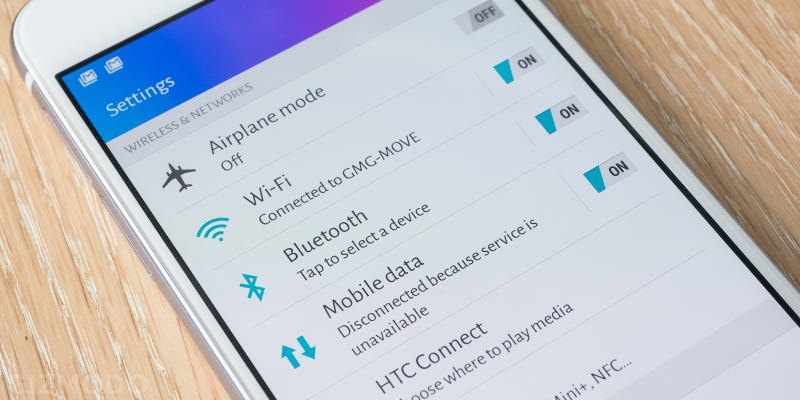
Marshmallow brings handy improvements like customizable app permissions and Google Now On Tap which will recommend things to do based on what’s on your screen. The app permissions thing will save you some time if you’re cautious about privacy, but for now, Now on Tap needs a little more time to grow to file it under the “useful” column.
Fingerprint Sensor
Now this is important. Past HTC phones have lacked the wildly handy invention that is the fingerprint reader, but the A9 comes with a great one. It’s actually faster than what you’d find on an iPhone 6, which is probably one of the only ways that the phone outpaces its lookalike.
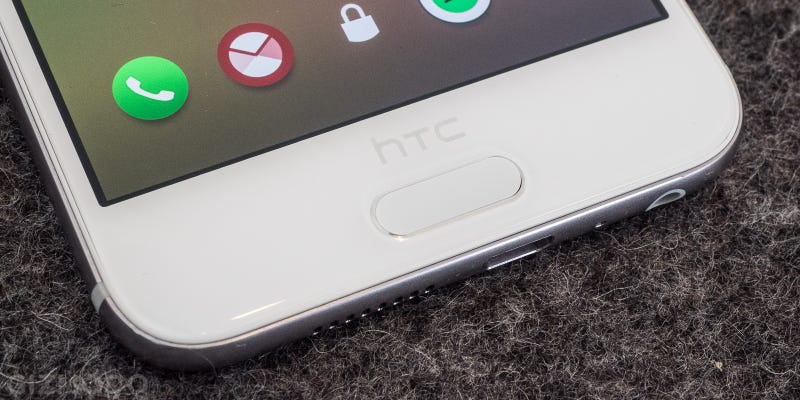
It’s obviously better than the HTC One M9 which lacks a fingerprint reader and a home button altogether.
Camera
The camera is fine, but it’s not amazing. The 13-pixel rear camera takes decent pictures in well-lit and low-light conditions. It’s surprisingly better than the M9’s 20-megapixel camera.
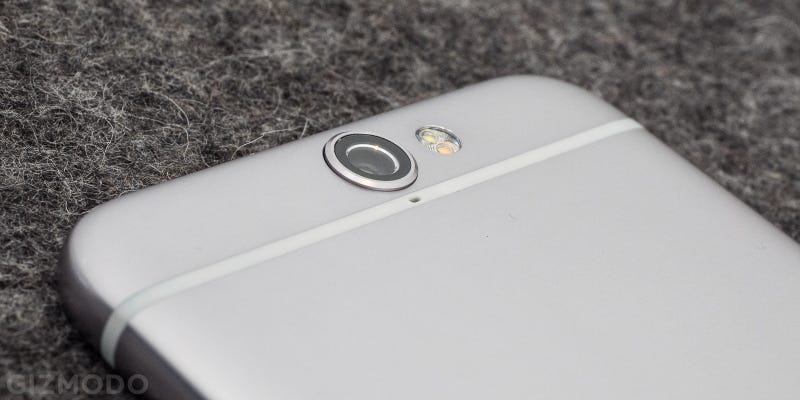
But if you want to play the iPhone comparison game, it’s just not as sharp or as versatile and doesn’t threaten the best Android shooters out there either.
Should You Buy It?
Do you need a new phone so badly that you can snatch up the A9 at the $400 launch price and do you desperately want an iPhone form factor with the versatility of an Android phone? Then yes, you should buy it, but that’s a lot of ifs for one particular niche individual. For most people, springing for iOS or even the equally luxe Nexus 6P will be the better option.

HTC One A9 Specs
- OS: Android 6.0 (Marshmallow) w/ HTC Sense UI
- CPU: Snapdragon 617, 1.5GHz 64-bit octa-core
- Screen: 5-inch 1080p AMOLED
- RAM: 3GB
- Storage: 32GB + 2TB of storage
- Camera: 13 megapixel rear camera / 4 UltraPixel front camera
- Battery: 2,150 mAh
- Colors: Opal Silver and Carbon Grey (Deep Garnet later this year and Topaz Gold Internationally)
- Price and Availability: $400 unlocked, all major carriers in the first week in November. $500 after November 7.
- Notable Extras: 6 Months of Google Play Music, Uh Oh Protection Plan, Unlock bootloader without voiding warranty, 15-day guarantee for getting the latest Android build





